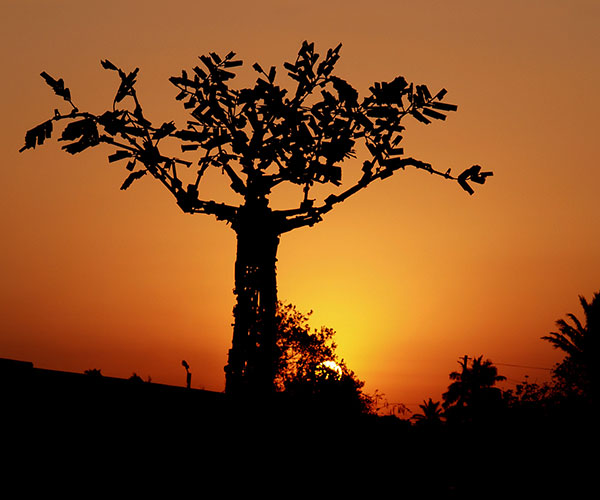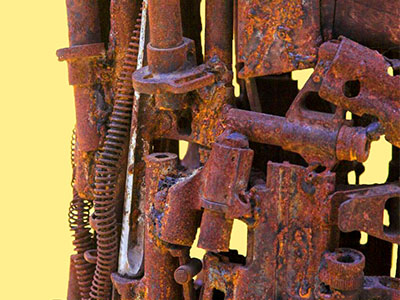Subtotal: $
Checkout-

Sidewalk Ballet
-

The Eternal People
-

Robert Hayden’s “Those Winter Sundays”
-

The Pilgrim City
-

Not Just Personal
-

Editors’ Picks Issue 23
-

Madeleine Delbrêl
-

Covering the Cover: In Search of a City
-

Urban Series (Neighborhood)
-

In Search of a City
-

Readers Respond: Issue 23
-

Family and Friends: Issue 23
-

One Inch off the Ground
-

Re-Mapping Belfast
-

Serving Kings
-

Up Hill
-

City of Bones, City of Graces
-

Small Acts of Grace
-

In the Valley of Lemons
-

City of Clubs
-

Save Your Sympathy
-

From “In the Holy Nativity of Our Lord”
-

Digging Deeper: Issue 23

The great vision of the New Jerusalem at the end of the Book of Revelation is a vision of ultimate beauty (Rev. 21–22). The word beauty doesn’t occur much in the Bible, but the celebration of creation all the way from Genesis, through the Psalms and prophets, on into the Gospels and here in Revelation, should alert us to the fact that, though the ancient Jewish people did not theorize about beauty like the Greeks did (that’s another story, and a fascinating one, though not for today), they knew a great deal about it and poured their rich aesthetic sensibility not only into poetry but also into one building in particular: the temple in Jerusalem, whose legendary beauty inspired poets, musicians, and dancers alike. This is the temple where YHWH’s glory is glimpsed, not as a retreat from the world but as a foretaste of what is promised for the whole world. In the great vision of John, the temple has disappeared because the whole city has become a temple; the point of the city is not that it is a place of retreat from a wicked world but that its new life is poured out into the whole world, to refresh and heal it. …

Tree of Life at Sunset, sculpture by Kester, Hilario Nhatugueja, Fiel dos Santos, and Adelino Serafim Maté
Photograph by Developing Dreams / Flickr
In passages like this we see, with the eye of the apocalyptic visionary, the astonishingly powerful beauty of God’s new creation, beauty that should serve as an inspiration to artists and, through their work, to all of us as we seek to give birth to the life of the new creation within the old. The golden city, perfectly proportioned, equal in length and breadth and even, remarkably, height, has, says John, the glory of God and a radiance like a very rare jewel, like jasper, clear as crystal. The wall is built of jasper, while the city itself is pure gold, clear as glass. The foundations are adorned with jewels: jasper, sapphire, agate, emerald, onyx, cornelian, chrysolite, beryl, topaz, chrysoprase, jacinth, and amethyst. The twelve gates are twelve pearls, while the streets of the city are pure gold, transparent as glass. I confess that my knowledge of jewelry is so poor that I can’t at once envisage those shining foundations, but I know that whoever wrote this passage delighted in them and wanted readers to do the same, relishing them one by one and in their glittering combination.
In the great vision of John, the temple has disappeared because the whole city has become a temple.
I know too that the idea of city streets paved with gold had nothing to do with fabulous wealth – pity the poor human race, when dazzling beauty is reduced to purely monetary function! – but rather with the most ravishing and wonderful beauty imaginable. This is the apocalyptic vision of the beauty of God. And it is given to us not so that in desiring to belong to that city we forget the present world and our obligations within it, but so that we will work to bring glimpses of that glory into the present world, in the peacemaking that anticipates the Isaianic vision of the wolf, the lamb, and the vegetarian lion; in the doing of justice that anticipates the final rule of the true Messiah; in the work of healing that springs from the water of life flowing from the city into the world around; and not least in the glorious art that gives birth to genuine beauty within a world full of ugliness, which bridges the gap between Isaiah’s present and future visions, a world full of glory and a world to be filled yet more completely.
Already a subscriber? Sign in
Try 3 months of unlimited access. Start your FREE TRIAL today. Cancel anytime.

Tree of Life, sculpture made of machine gun parts, detail
As an aid to this reflection, and to the vocations that follow from it, let me close with a truly remarkable example of the sort of thing I mean. In Revelation 22, the river of life flows from the city to irrigate the surrounding countryside, and on its banks grows the tree of life: not a single tree, as in Genesis, but many trees, now freely available, bearing fruit each month and with leaves for healing. This image of the tree of life and the radical and beautiful healing it promises has generated an extraordinary work of art, commissioned jointly by the British Museum and Christian Aid, and created by artists in Mozambique after the end of that country’s long and bitter civil war.
The work is a sculpture of the tree of life. It stands nine or ten feet tall, with branches spreading nine or ten feet in all directions. In it and under its shade are birds and animals. And the whole thing – tree, creatures, and all – is made entirely from decommissioned weapons: bits and pieces of old AK-47s, bullets and machetes and all the horrible paraphernalia of war, most of them made in peaceful Western countries and exported to Mozambique so that the government aid given by the West to that poor country would flow back to our own industries. The point – and it is a stunningly beautiful object at several levels – is that this particular “Tree of Life” reflects the Isaianic promise that swords will be beaten into plowshares and spears into pruning hooks. The tree stands as a reminder both of the horror of the world, with its multiple human follies and tragedies, and of the hope of new creation. It has an immediate and powerful message for the people of Mozambique, who had forgotten how to hope, had forgotten that there might be such a thing as peace, as they are invited to sit under the tree and enjoy its fruit and its healing. But it is also a sign of what genuine art can be, taking a symbol from the original creation, building into it full recognition of horrors of the present world that by themselves would lead us to despair, and celebrating the promise for the new world, a world filled with God’s glory as the waters cover the sea. It offers celebration without naïveté, sorrow without cynicism, and hope without sentimentality. Standing before it is like glimpsing an apocalyptic vision, a vision of the beauty of God.
Reflecting on this vision ought to inform and direct our thinking and action in many fields of inquiry and endeavor. But for the moment we might do well simply to pause in contemplation and gratitude. This is the vision of God’s new heavens and new earth; within that vision, each of us has a particular calling – prophetic, artistic, political, theological, scientific, whatever it may be – by which God will call us to bring signs of that new world to birth within the old one, where vision is still limited and widows still weep.
Source: Surprised by Scripture (New York: HarperOne, 2014). Used by permission of the publisher.
Already a subscriber? Sign in
Try 3 months of unlimited access. Start your FREE TRIAL today. Cancel anytime.


































Roger Siswick
A blessed minder of what and who we should be. Bless you Tom Wright...
Elizabeth Rhodes
Thank you for the Tree of Life article.....N T Wright, author, and artist who created this beautiful and thought provoking piece ...just, Thank You......Elizabeth Rhodes, Renton, Wa.